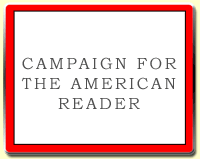Robert Crawford is the author of
Scotland’s Books and the coeditor of
The Penguin Book of Scottish Verse. A fellow of the Royal Society of Edinburgh and the British Academy, he is

the Professor of Modern Scottish Literature at the University of St Andrews.
The Bard, his biography of Robert Burns, was awarded the Saltire Society Scottish Book of the Year 2009. Crawford’s six poetry collections include
The Tip of My Tongue and
Full Volume, which was shortlisted for the T. S. Eliot Prize. Crawford's new book is
Young Eliot: From St. Louis to "The Waste Land".
One entry on Crawford's list of the ten best T. S. Eliot poems:
“Marina”
“Marina” is Eliot’s most beautiful poem. Read it aloud. Its music is full of longing, and tidal in its ebbs and flows. Drawing on all the small-boat sailing Eliot had done off the New England coast in his youth, it’s wonderfully echoic, and contains daring technical devices that fascinate the ear: Eliot rhymes, for instance, not just across the breaks between verse paragraphs but also repeatedly within the lines. The breaks in the verse signal separation, the rhymes connection: the whole poem operates in the tension between connectedness and separation. It may be a religious poem, but it’s also a poem about longing for a child. The title, suggesting boats and the sea, is also the name of a lost daughter in Shakespeare’s Pericles: that particular Marina is presumed drowned, but then she’s discovered alive; the epigraph comes from a play by Seneca in which a father finds his children have been killed. Is the daughter in Eliot’s “Marina” real or only imagined? The poem was written at a difficult time when the poet was coming to terms with his own childlessness.
Read about
the other entries on the list.
Listen to Eliot read "Marina."
--Marshal Zeringue













































